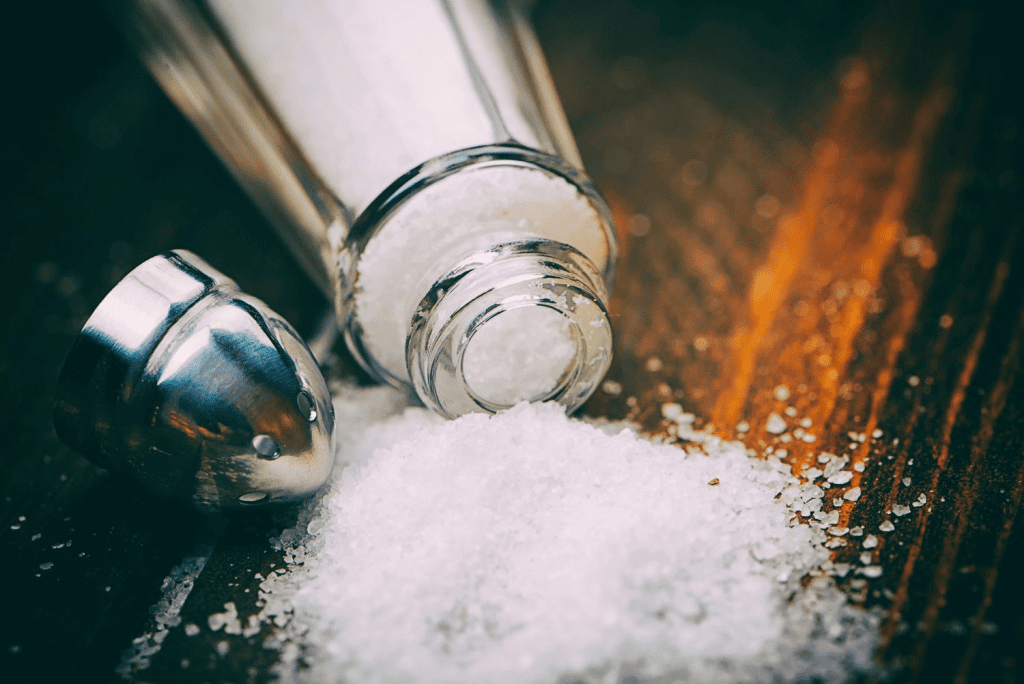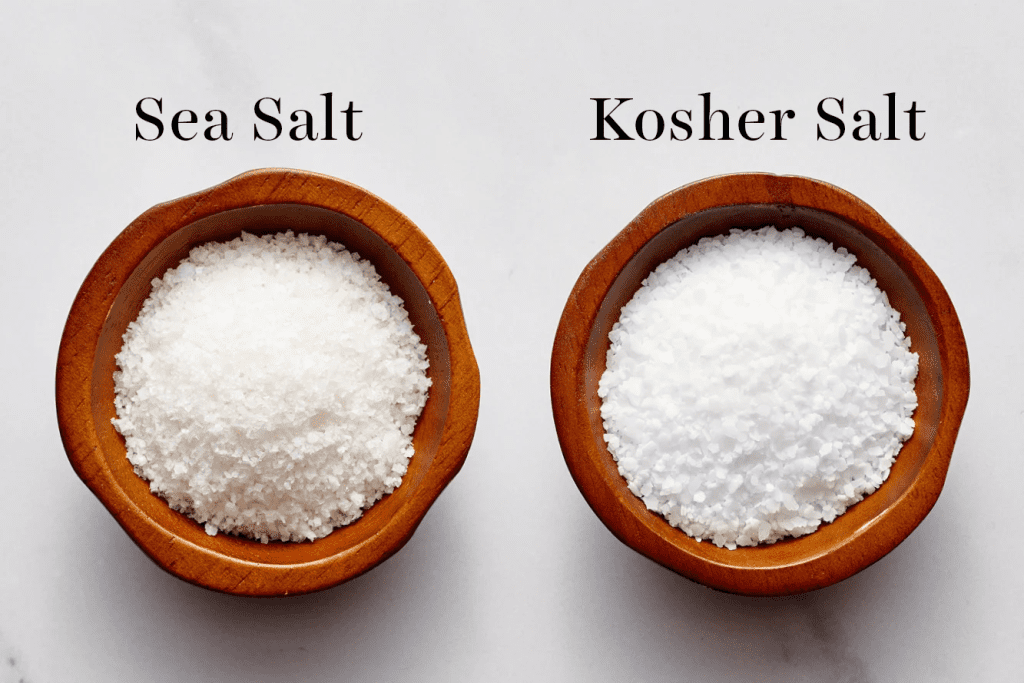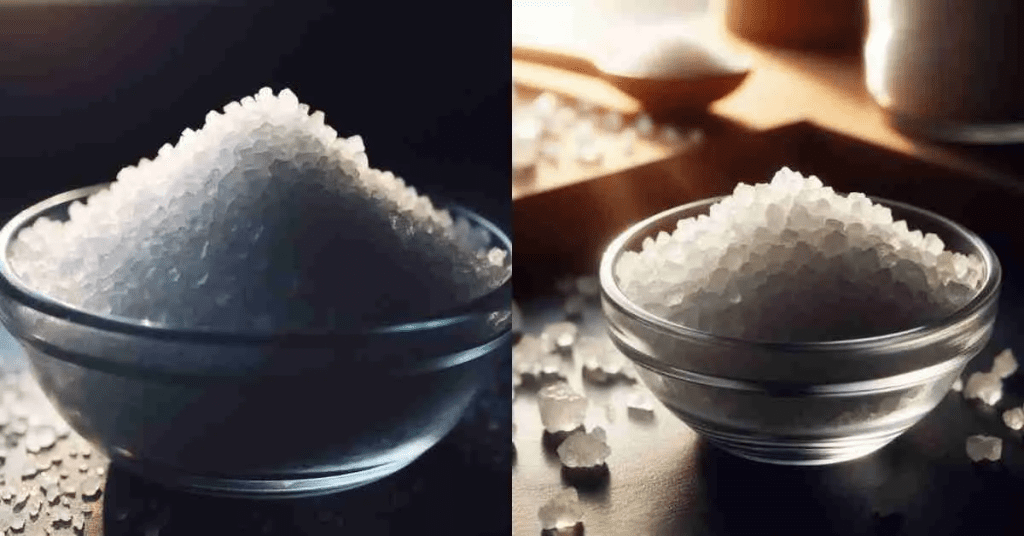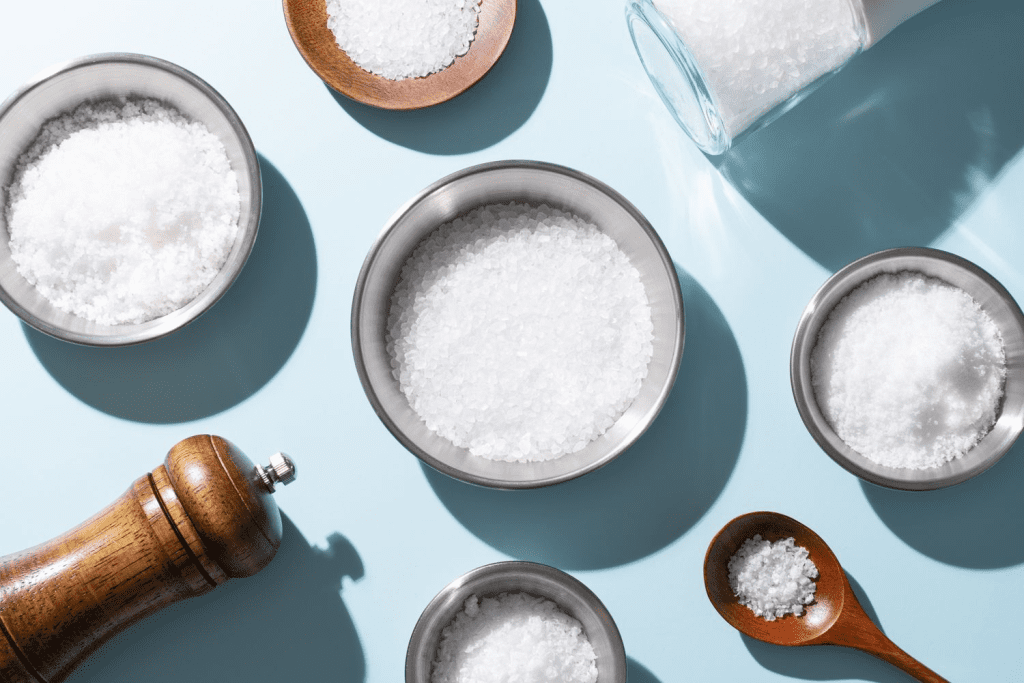Salt is the unsung hero of cooking, quietly transforming flavors and textures in every dish it touches. But not all salts are created equal. Table salt and kosher salt may look like close cousins in your pantry, but they differ in ways that can significantly impact your cooking. If you’ve been using them interchangeably, like I did, you might want to reconsider. My neighbor certainly thinks so. Let’s break it down.
What Is Table Salt? A Kitchen Staple with a Twist

Table salt is the classic workhorse of the spice rack. Refined to contain 97-99% sodium chloride, it’s enriched with iodine, a nutrient that supports thyroid health, and anti-caking agents to keep it flowing freely. Its fine granules dissolve quickly, making it perfect for baking and recipes where precision is key.
But there’s a hidden twist. Those additives can slightly alter its flavor. Iodine, while beneficial, lends a faint metallic note, which some chefs feel interferes with the purity of a dish’s flavor. For everyday home cooking, though, table salt does the job admirably.
Kosher Salt: The Chef’s Favorite
Kosher salt, named for its use in the koshering process to draw blood from meat, boasts a coarser texture and pure, clean taste. It’s free from iodine and anti-caking agents, leaving behind only what matters: sodium chloride.
Its large, flaky crystals are easy to pinch and sprinkle, giving cooks more control over seasoning. It’s not just about practicality. The lack of iodine means kosher salt offers a neutral, unadulterated saltiness that many professional chefs swear by.
Texture Matters: Why It’s More Than Just Looks
The most obvious difference between table salt and kosher salt is their texture. Table salt’s fine crystals are densely packed, while kosher salt’s larger flakes take up more space.
Because of its size, kosher salt weighs less by volume than table salt. A teaspoon of table salt will pack more punch than a teaspoon of kosher salt. This difference can make or break a dish if you don’t adjust measurements when substituting one for the other.
How Salt Shapes Your Food’s Flavor and Texture
Salt isn’t just a seasoning—it’s a magical ingredient that works behind the scenes to enhance flavor and create texture.
In cooking, salt brings out the natural flavors of ingredients, balances sweetness, and helps create a golden crust on roasted meats. In baking, it strengthens gluten, regulates yeast fermentation, and prevents blandness in sweets.

Kosher salt excels in cooking because its larger crystals dissolve slower, offering bursts of flavor. Table salt shines in baking, where precision and quick dissolution are crucial.
Does Salt Type Affect Flavor? Absolutely
Flavor purists argue that table salt’s iodine content adds an unwanted metallic tang, making kosher salt the better choice for delicate dishes. But here’s the kicker. Most people won’t notice unless they’re comparing side by side.
Kosher salt’s clean taste and unique mouthfeel can elevate a dish, making it a favorite for seasoning meats and vegetables. If you’re after subtlety and control, kosher salt wins the flavor game.

Measurements Matter: Avoiding Over- or Under-Salting
Switching between table salt and kosher salt without adjusting measurements can lead to disaster. Remember, one teaspoon of table salt equals about one and a half teaspoons of kosher salt.
If your recipe specifies a type of salt, stick with it. If you must substitute, adjust the quantity and taste as you go. Your taste buds are your best guide.
When Should You Use Table Salt
Table salt is ideal for recipes that require precise measurements, such as baking, where its fine crystals dissolve evenly. It’s also useful for quick seasoning in soups, stews, and sauces where rapid dissolution is needed. Its iodine content can also be beneficial in regions with iodine deficiencies.
For precision and reliability, table salt is your go-to. It’s the detail-oriented accountant of the salt world.
When Should You Use Kosher Salt
Kosher salt shines in seasoning meats, where its coarse texture clings beautifully and creates flavorful crusts. It’s also perfect for brining poultry or fish, as its larger crystals dissolve evenly in water. Kosher salt’s clean taste makes it ideal for recipes where pure salt flavor is essential, like sprinkling on roasted veggies or finishing a steak.
Think of kosher salt as the free-spirited artist. It’s all about texture, flavor, and creative control.

Common Myths About Salt Interchangeability
Many assume all salts are the same, but that couldn’t be further from the truth. The crystal size and additives matter, impacting both taste and measurement. Substituting salts freely can lead to over-salting or bland results. Understanding these nuances can take your cooking from good to unforgettable.
Expert Tips for Choosing the Right Salt
Follow the recipe. If it calls for kosher salt, don’t swap in table salt without adjusting. Taste as you go. Your taste buds know best. Season incrementally and adjust. Experiment with both types in different dishes to discover your personal preference.
Salt might seem like a small detail, but it’s a culinary powerhouse. Choosing the right type can transform your cooking.
Conclusion: Small Choices, Big Impact
Table salt and kosher salt may share the same core ingredient, but their differences can profoundly affect your recipes. Whether you reach for table salt’s precision or kosher salt’s versatility, understanding their unique qualities allows you to cook with confidence.
Next time you’re in the kitchen, pause before you grab the salt shaker. That small choice could be the secret to elevating your dish from ordinary to extraordinary.


